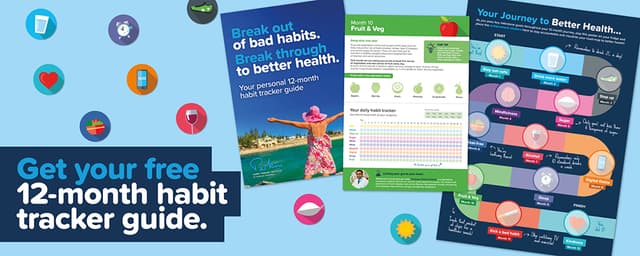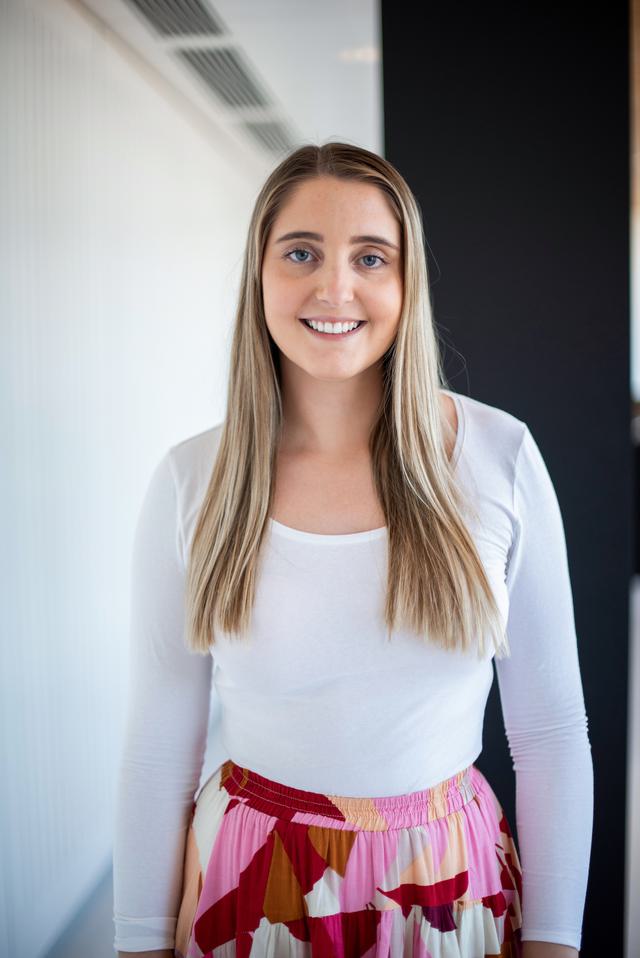Harry Perkins Institute: Habit tracker regular giving acquisition
- Exhibited by
- Paige Gibbs
- Added
- November 18, 2021
- Medium of Communication
- Online; publication
- Target Audience
- Regular donors
- Type of Charity
- Health
- Country of Origin
- Australia
- Date of first appearance
- 2021
SOFII’s view
Talk about a change of fortunes! Before 2021, this relatively small medical charity only had a tiny number of regular donors. By launching a new magazine that included a ‘habit tracker’ that supporters could use to get fit, the Harry Perkins Institute multiplied their base of regular donors from around 20 to close to 600. That’s an incredible turnaround – all achieved by providing a super value exchange and an excellent supporter experience.
Background
The Harry Perkins Institute of Medical Research (aka the Perkins) conducts innovative research into the diseases that most affect our families in the Western Australian community and the world at large.
The Perkins was established in 1998 to unify Western Australian scientists in a collaborative research powerhouse. In the years since, we have grown to become one of the nation’s leading medical research centres, where a close-knit team of more than 250 research and trial staff work together to defeat the major diseases that impact our community – like cancer, heart disease, diabetes and rare genetic diseases.
Summary / objectives
Before 2021, the Perkins’ regular giving (RG) pool consisted of a handful of donors. Before then, we did not have the right technology or culture to support regular giving. That changed in 2021. We’d already actioned a new database that had RG capability and we’d successfully lobbied the board for a small acquisition investment to lessen our reliance on major gifts and events. We knew our direct mail pool was small, so we decided to create an RG value exchange product.
Special characteristics
The product was a 12-month Guide to Better Health that featured a ‘habit tracker’. People were challenged to address and improve one health habit a month. Examples included: exercising regularly, eating less meat, or drinking more water.
Merits
Unlike many value exchanges that encourage donors to act out of fear and urgency, we took a radical approach that was based on positivity and well-being. Given the state of the world in which we live, this approach was one that timed perfectly with people being stuck at home.
We marketed the product exclusively via Facebook ads. Potential donors were then contacted by a telemarketing agency to capture details and do a soft conversion ask.
Everyone received the guide and experienced a 12-month engagement journey to tie them to the cause, regardless of whether they converted or not. The journey included monthly e-mails from our director coinciding with their habit progress. A second e-mail from Amelia, the campaign’s champion, provided top tips and further guidance to help them achieve their new healthy habit. Newly acquired regular givers also received a personalised welcome video and welcome pack from Amelia. She uses her trusty selfie stick to send personalised videos to every new donor, so they get to know her from the outset.
Tip from SOFII: (Check out Amelia’s super email signature by clicking it on the left!)
Results
Results have been outstanding. We’re experiencing a AU$3.23 cost per lead (lowest day at AU$1.44), along with an 8.25 per cent conversion rate, an average gift of AU$20.81 per month and a retention rate after eight months of 93.8 per cent. And participants are providing feedback that they love the programme, with the accompanying journey regularly receiving read rates of more than 40 per cent.
Influence / impact
The impact has been significant. What was supposed to be a small, short test of a seasonal value exchange has actually kept performing months after we thought it would. We intended to switch off the campaign early in the new year to test another product, but it became the little engine that kept going and the results continued to surprise us until we turned it off in July.
We now have an established regular giving product which is bringing in monthly gifts and lessening our exposure to the volatility of major gifts and events. And best of all, the Perkins has a new cohort of committed, informed donors.
Other relevant information
One of the main aims of our modest investment in acquisition was to provide evidence that we were missing out on valuable, long-term supporters through no investment into regular giving. To go from less than 20 regular givers to about 600 in a few months won’t seem like an achievement to larger organisations but it was a significant win for us. It was more than enough ammunition to go to the board and ask for continuous investment and it provided proof that diversifying our fundraising through digital channels was achievable.
We measured anything that moved! Along with our internal costs we looked at the following:
• number of contactable leads
• telemarketing costs
• regular giver conversion rate
• average gift
• number of new regular givers
• cost per regular giver
• monthly income
• year one value
• year one cost per AU$ raised
• year one ROI
• year three value
• attrition rates
• remaining leads
• one-off gifts
The lessons learned:
• Positivity can lead to regular donors. This was something we hoped would be the case, but we never expected for the product to be so warmly received.
• Interest audiences outperformed lookalikes. This opened an entirely new segment that we hope to test further in the future.
• Throw the rules away and take risks with good ideas.
• Giving your journey a real-world host, like Amelia, who personalises the experience for your donor.
 View original image
View original image
 View original image
View original image
 View original image
View original image

















